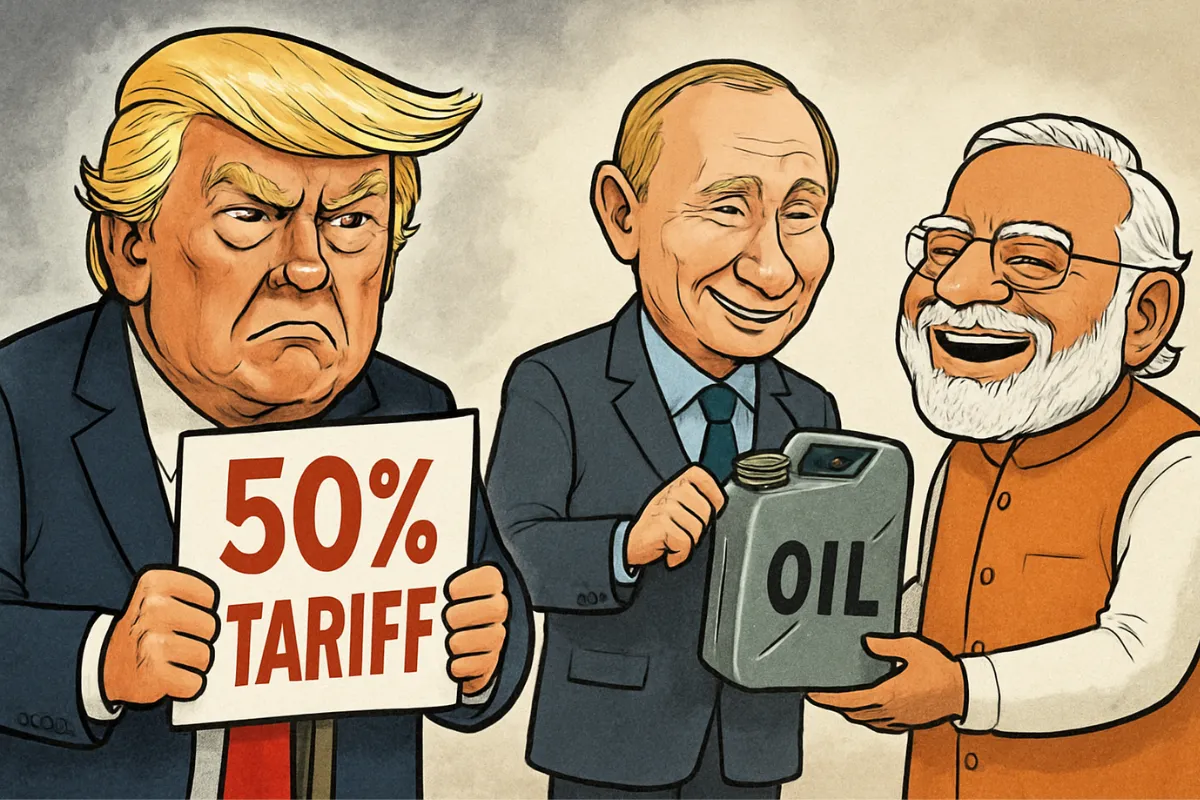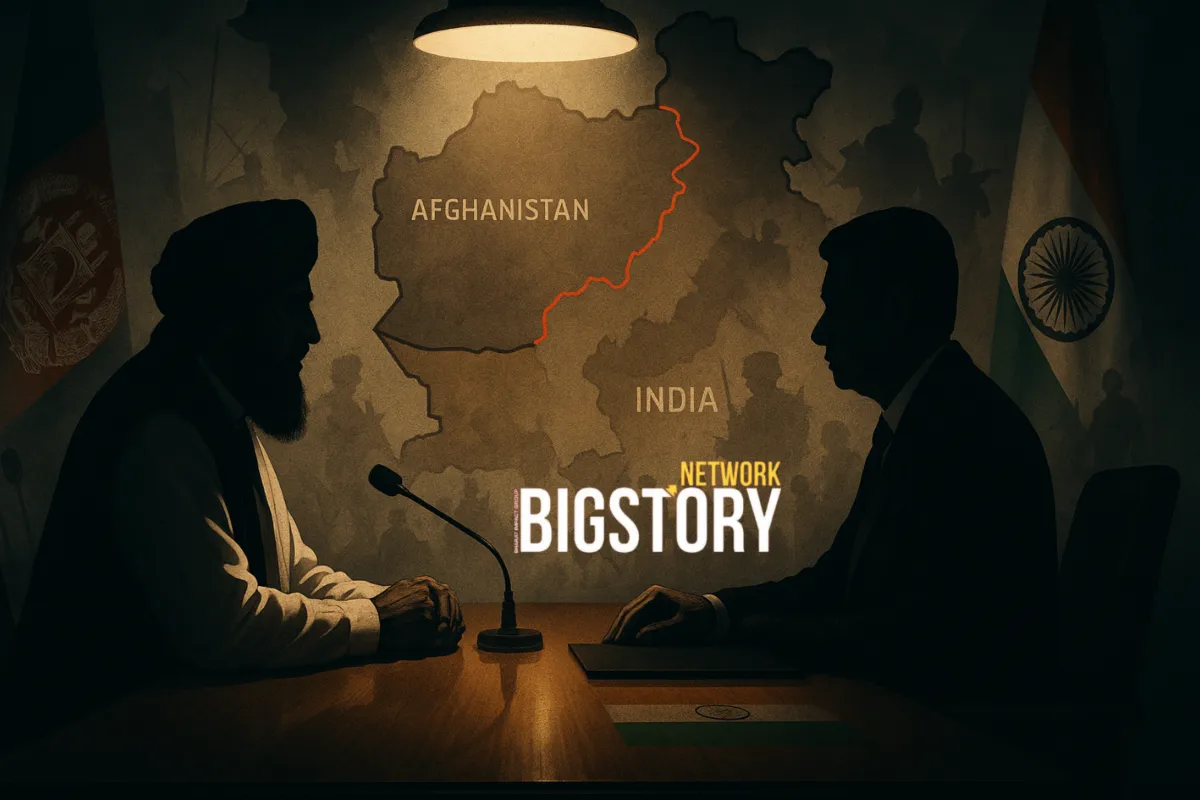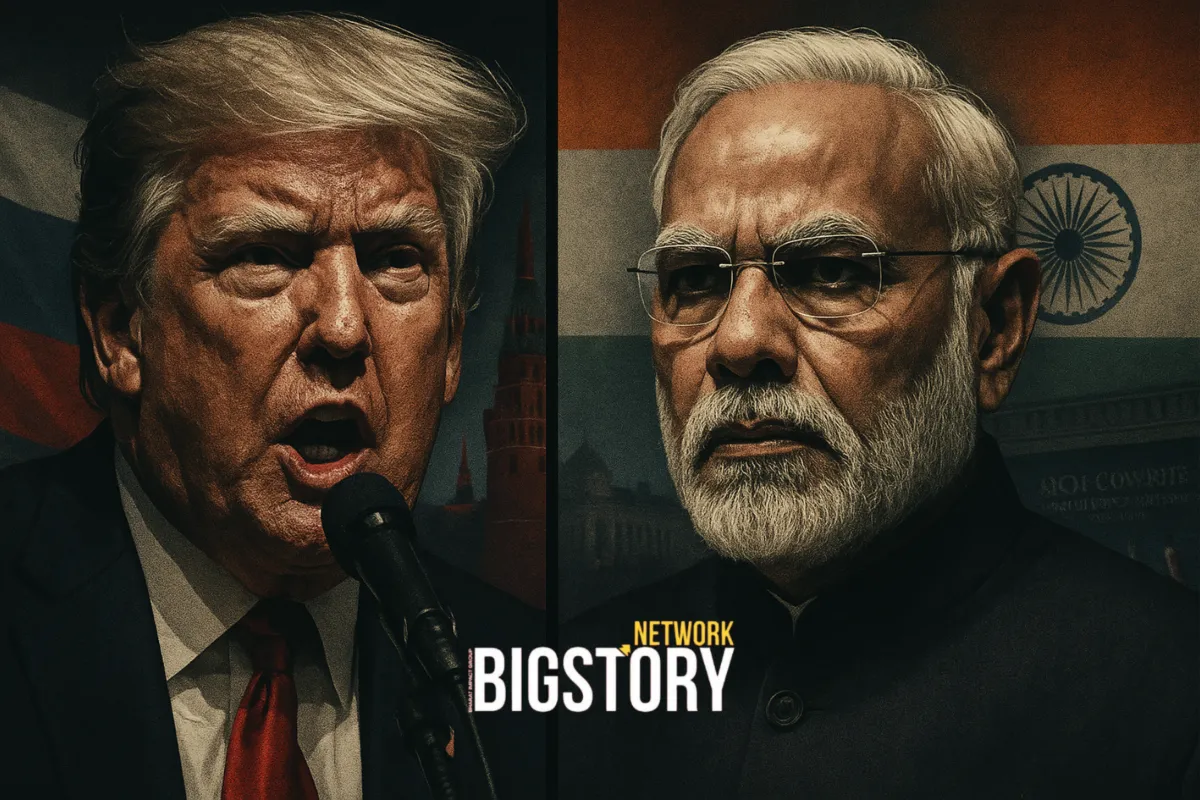The White House has publicly linked new trade actions targeting India—described by the press secretary as “sanctions”—to the administration’s objective of accelerating an end to the Ukraine war, explicitly casting the move as part of a broader strategy to increase pressure on Moscow and shape conditions for diplomacy. In remarks summarized across multiple outlets, Press Secretary Karoline Leavitt asserted that the president “has taken actions, as you’ve seen, sanctions on India and other actions as well,” and framed the measures as instruments to “bring the war to a close” by constraining Russia’s avenues to finance and sustain its military effort.
This White House positioning attempts to reconcile two narratives that often collide in policy debates: the use of economic coercion to influence a third country’s behavior, and the need to preserve long-term strategic partnerships that underpin broader regional objectives. India has emerged as a crucial energy buyer and an important U.S. partner in the Indo-Pacific, but its increased imports of discounted Russian crude since the onset of conflict have been at the center of Western scrutiny. By labeling the trade steps as “sanctions,” the administration is signaling a shift from persuasion to compellence, even as it insists the target is Russia rather than India per se.
Reports from business and policy media in India and the U.S. emphasize that the practical effect for Indian exporters is a sharp tariff escalation, with coverage noting the White House’s own characterization of the package as a strategic lever tied to Russia rather than a conventional bilateral trade dispute. In plain terms, the administration’s message is that Indian commerce will face higher barriers unless Moscow feels greater economic pain—reflecting a calculus that pressure on partners of Russia can tighten the overall sanctions regime’s effectiveness.
The timing of the announcement also matters. The press line came shortly after a high-profile leader-level engagement with Ukraine’s President Volodymyr Zelenskyy, where discussions reportedly touched on pathways to substantive talks with Moscow, conditional on shifts in battlefield and economic dynamics. By connecting the India measures to that diplomatic push, the White House is arguing that these tariffs are not isolated trade decisions but part of a coherent toolkit meant to alter incentives and shorten the war’s trajectory.
Still, the policy carries notable risks. India’s energy security strategy has leaned on diversified sourcing, with Russian barrels playing an outsized role in keeping domestic fuel prices manageable and industry competitive. Tariff-induced frictions could spill into broader economic ties, potentially complicating cooperation on technology, supply chains, and defense—a reality that analysts in both countries have highlighted in their immediate reactions to the announcement. The administration’s defense—that the goal is to pressure Moscow and that New Delhi remains a valued partner—reflects awareness of these trade-offs and a desire to compartmentalize the move within a larger strategic relationship.
Another tension lies in the mechanics of sanctions efficacy. Economic pressure works through market channels, but crude oil flows are notoriously adaptable. Even if Indian purchases are disincentivized by tariff-driven costs elsewhere in the relationship, Russia may redirect cargoes via shadow fleets or alternative buyers, muting the immediate impact. The White House’s answer appears to be scale and signaling: layering measures across multiple nodes—finance, insurance, and trade partners—while communicating resolve that the coalition will keep tightening until the incentives change.
For India, the immediate policy questions are pragmatic. How to safeguard energy affordability without inviting secondary exposure? How to maintain growth momentum if input costs rise or if exporters encounter higher barriers in the U.S. market? And what adjustments—whether in payment channels, supplier mix, or hedging strategies—can mitigate the turbulence? These are solvable problems, but they require balancing domestic imperatives against geopolitical headwinds that New Delhi did not create and cannot fully control.
Diplomatically, New Delhi is likely to stress sovereignty and strategic autonomy while seeking clarity from Washington on scope, duration, and off-ramps. If the U.S. intends the measures as leverage rather than a lasting reset, the two sides may try to script de-escalation milestones tied to verifiable shifts in Russian revenue streams or negotiated steps in the conflict. Such conditionality could transform a blunt instrument into a calibrated signal, preserving space for cooperation in other domains even as energy ties with Russia are scrutinized more sharply.
Markets will watch for second-order effects. If Indian refiners rebalance away from certain crude streams, global prices could firm depending on OPEC+ behavior and broader demand conditions. A price uptick would test the White House’s political argument domestically, where consumer fuel costs are sensitive. Conversely, if coordination among partners is tight and alternative supplies are prepositioned, the net impact on prices could be contained. Either way, volatility is the near-term baseline, and both governments will be assessed on how quickly they stabilize expectations.
There is also a narrative battle. In Washington, proponents of the move will frame it as necessary resolve to end a destructive war by cutting into the finances that fuel it. Critics will warn of collateral damage to a pivotal Indo-Pacific partnership and question the real-world elasticity of Russian oil flows. In New Delhi, political consensus typically favors resisting external pressure, especially when it touches energy prices and inflation; yet there remains a strong preference across parties to keep the U.S.-India partnership on a constructive footing. The interplay of these narratives will shape the pace and tone of subsequent diplomacy.
What might a constructive path forward look like? Three elements stand out. First, clarity: a joint statement delineating the intent, scope, and review mechanisms for the measures, including specific conditions under which they would be eased or lifted. Second, mitigation: a coordinated plan to backfill any supply gaps with alternative volumes, coupled with financial or insurance facilitation to keep landed costs manageable for Indian refiners and consumers. Third, diversification: accelerated work on medium-term energy resilience—expanding LNG capacity, augmenting strategic reserves, and building flexible import infrastructure that reduces vulnerability to single-source shocks.
Ultimately, the White House has chosen to align India-focused tariffs with its war-termination strategy in Ukraine, betting that broader, more integrated pressure will help bend the conflict toward negotiations. Whether that bet pays off will depend on how deftly Washington balances coercion with coalition management—and how effectively New Delhi can protect its energy and growth priorities without derailing a strategic partnership that both sides have spent years constructing. The next steps—clarifying terms, smoothing market impacts, and maintaining open channels—will determine whether this controversial move becomes a short, purposeful detour or a lasting complication in the U.S.-India relationship.







Leave a Reply